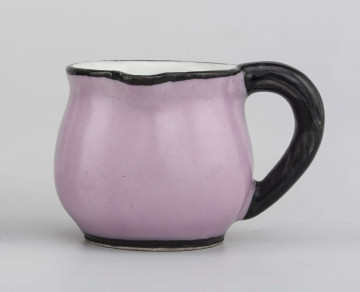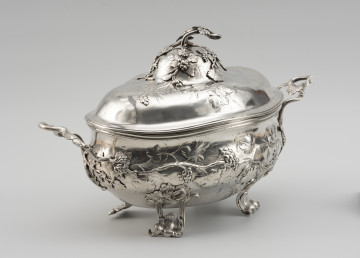
Creamer jug
1825 — 1835
National Museum in Lublin
Part of the collection: Folk ceramics
The purpose of the white-glazed faience dish presented here is indicated by its shape. It was most likely used as a mould for preparing and serving meat in jelly, or, as its turkey-like shape suggests, poultry in jelly. These types of moulds were common tableware, especially in the first half of the 20th century. This particular example was produced by the well-known manufacturer Villeroy & Boch, whose operations date back to the mid-18th century. In the 19th century, especially in the latter half, the products of this factory, along with those of many others specialising in faience production, significantly contributed to the displacement of artisanal pottery from the market. This process was first noticeable in cities and then in rural households. Mass production replaced the handmade products of local pottery workshops, including the popular and characteristic lead-tin glazed dishes known as Stettiner Ware in Pomerania. Iwona Karwowska
Author / creator
Object type
jelly mold, vessel (container)
Technique
techniki ceramiczne, batch production
Material
faience
Origin / acquisition method
purchase
Creation time / dating
Creation / finding place
Owner
The National Museum in Szczecin
Identification number
Location / status

1825 — 1835
National Museum in Lublin

circa 1750 — 1770
National Museum in Szczecin

1762 — 1770
National Museum in Szczecin
DISCOVER this TOPIC
Castle Museum in Łańcut
DISCOVER this PATH
Educational path